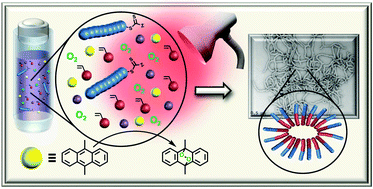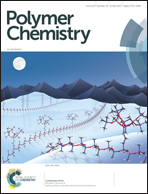Application of oxygen tolerant PET-RAFT to polymerization-induced self-assembly†
Abstract
The presence of oxygen during controlled/living radical polymerization (CLRP) can lead to a number of undesirable behaviours such as long inhibition periods and slow polymerization rates. Photoinduced Electron/Energy Transfer-Reversible Addition–Fragmentation chain Transfer (PET-RAFT) polymerization has been shown to possess tolerance to molecular oxygen in dimethylsulfoxide (DMSO) as solvent. This mechanism of oxygen tolerance is due to the rapid conversion of triplet oxygen into singlet oxygen, and then, its rapid consumption in the presence of the singlet oxygen quencher, dimethylsulfoxide. In this work, we demonstrate that the addition of singlet oxygen quenchers such as 9,10-dimethylanthracene (DMA), ascorbic acid (AscA) and (R)-(+)-limonene (Lim) allows for oxygen tolerant PET-RAFT polymerization to be achieved in a range of other organic solvents and under low energy red light (λmax = 635 nm, 3.0 mW cm−2). In particular, when DMA is used as a quencher, remarkably similar polymerization kinetics are observed regardless of prior deoxygenation. Finally, the ability to perform in situ deoxygenation was exploited to conduct RAFT dispersion polymerization of benzyl methacrylate (BzMa) under ethanolic conditions and without inert gas sparging. Under these conditions, nanoparticles of different morphologies (spheres, worm-like micelles and vesicles) can be synthesized according to a polymerization-induced self-assembly (PISA) approach. This work greatly expands the versatility of PET-RAFT polymerizations by allowing oxygen tolerance to be achieved under a broader range of polymerization conditions.



 Please wait while we load your content...
Please wait while we load your content...